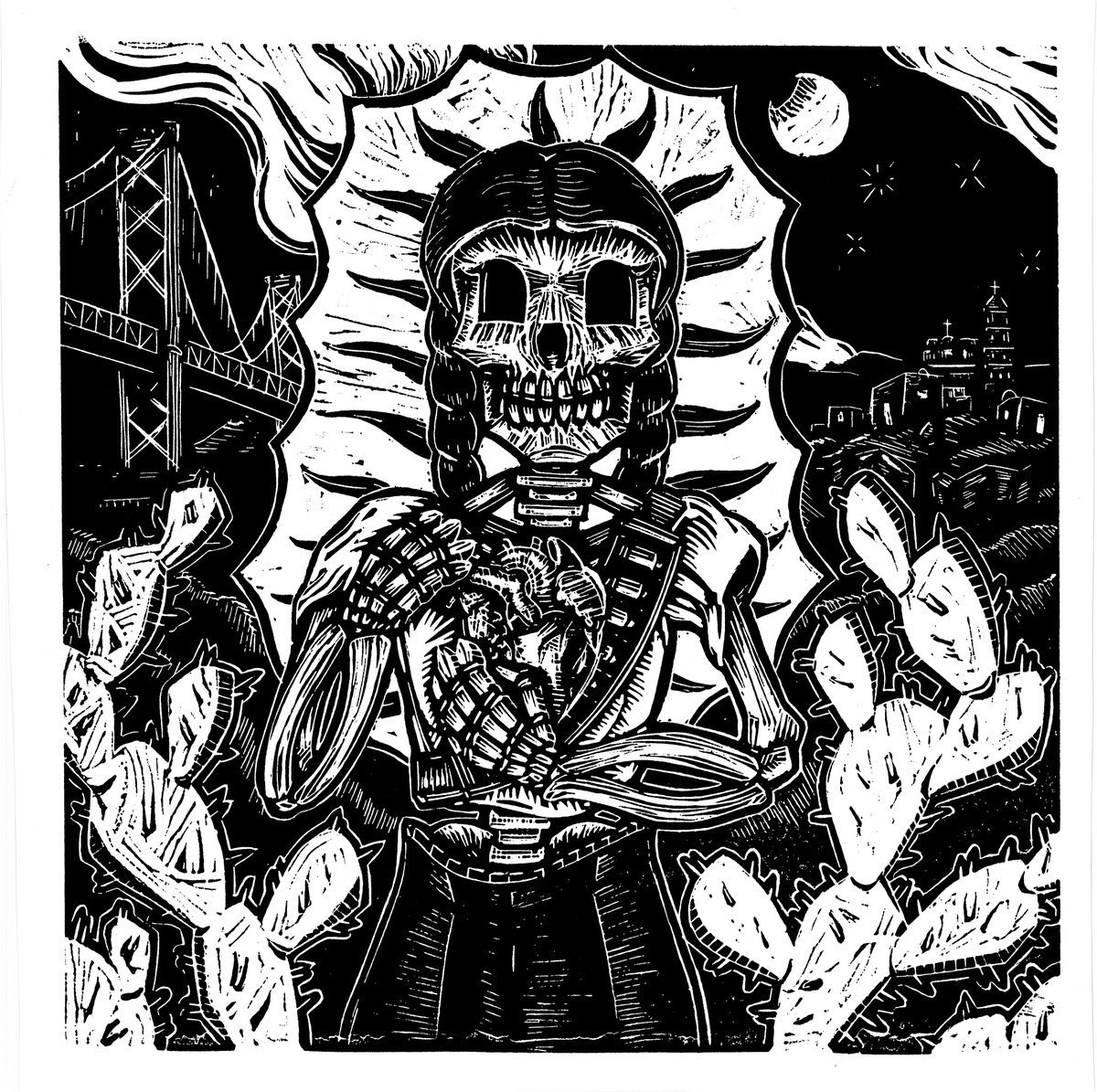By Salvador "Chamuco" Cortez
Published by Pochino Press
As a historian, my
mind is always boggled at how modern artists create images that are
reiterations of what their ancestors did several hundred years
before. It is as if the blueprint for modern art was encoded in one's
DNA. Upon perusing he work found in “From East Oakland with Love,”
I had to educate myself on linocuts. It is a sort of woodcut but
linoleum is used for the medium. As a b-boy, I have an affinity for
linoleum, so Chamuco Cortez' work spoke to me in different ways. So
Cortez's work is generational and brings so much to the forefront.
I didn't know what
to expect when this piece came to my desk. I think Pochino Press did
it a dope job putting it out as a book. I will admit that I stray away from art books if they are not in a coffee table book format. However, Pochino Press put together a wonderful book and they really allowed Cortez to flesh out how he gets down. The poems and essays
coupled with the art pieces give the reader much to digest. It allows
Cortez to be his full artistic self and leaves no room for
assumptions.
There is a linocut
piece entitled “Confession a Feeling” where two cholos are
kissing one another. It conveys so much in just one piece. This is
followed by “To Serve and Protect” another linocut with a pig
posing as an Oakland Police Officer. This is reminiscent of what Huey
P. Newton expressed back in the late sixties and early seventies.
Probably the best
part of “From East Oakland with Love,” is how Cortez pays homage
to Aztec culture. He introduces the reader to many of the deities of
the Aztecs. He then connects them to cholo culture in California. He
then connects it to the zoot suit culture of the 1950s. In doing so,
Cortez takes the reader through a virtual time machine via linocuts.
In one scene, he gives the reader a linocut of Kuauhtemoktzin and on
the next page he provides one of El Pachuco. Cortez provides the
parallels to each story and makes that important connection.
My favorite would
have to be “Still Warriors No Matter How” where he has a Brown
Beret reflecting off of an Aztec deity. This personifies Brown Power
and Pride. The reader can flip the page and enjoy the detail and
notice the similarities between both characters. While Cortez does
not give insight as to who this Aztec deity could be, it provides
that mystery that keeps the reader intrigued.
I enjoyed how
Cortez uses poetry from other writers to add on to his cipher. This
approach to art and activism is a dope mixture. Pochino Press did a
great job in this format. Hopefully we can see more art in this
medium that puts together art and activism. It's refreshing to find a
press that still puts out 'zines.
From East Oakland with Love and be
purchased here at the Pochino Press website.


